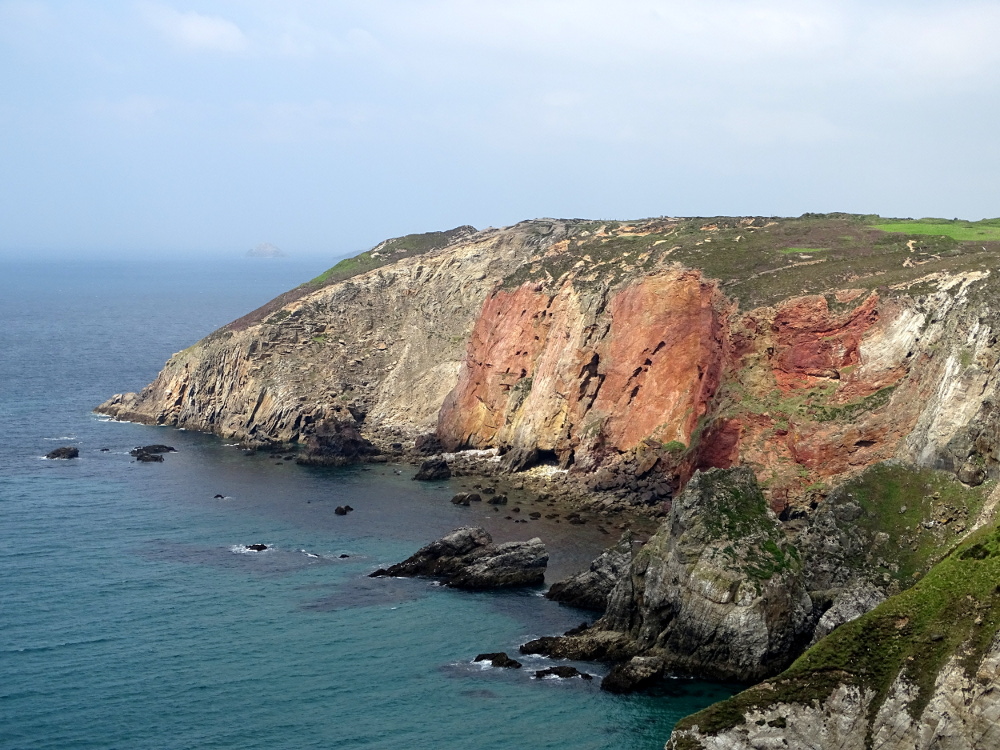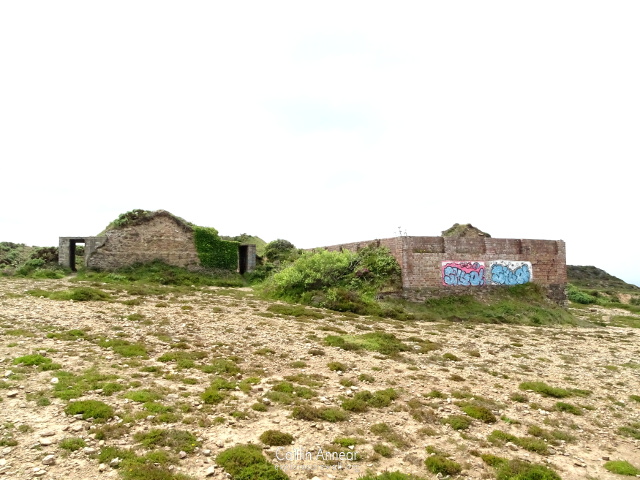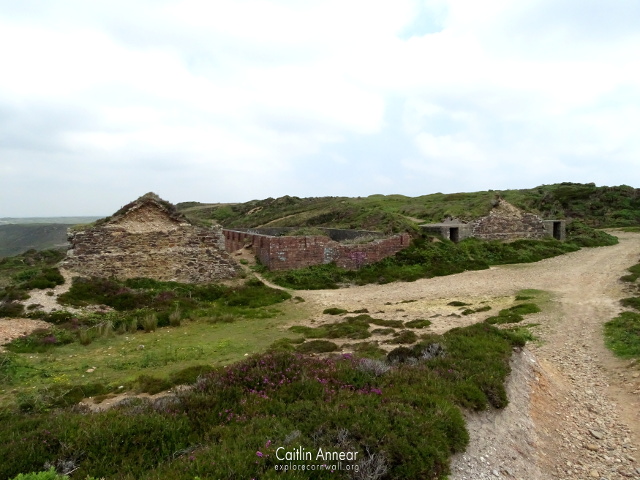The Cligga Head mine sits on the coastpath between St Agnes and Perranporth and is characterised by the ruinous remains of 20th century buildings and the striking red stained cliffs.
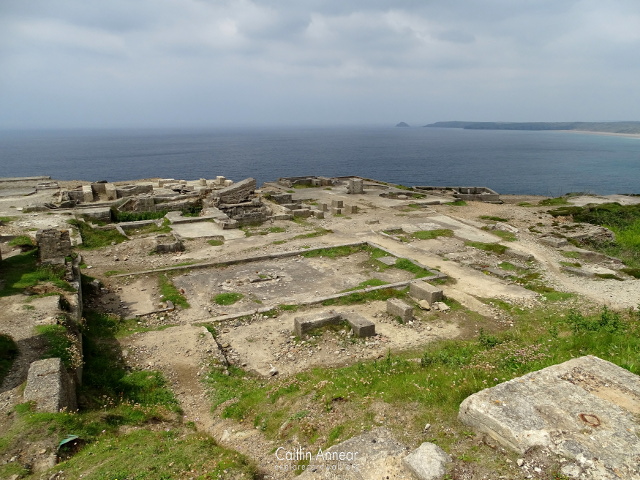
Like so many other Cornish mines, this section of cliff has been worked for centuries, however the earlier records are few and far between. Much of what little remains of the original workings has been built over in the last 100 years, making room for the extensive wolframite and explosives works that occupied the area since before first world war. The mine is bordered by Perran St George, Good Fortune and Wheal Prudence mines.
Just east of the headland was once the location for the explosives works. These were first built in 1889 when the British and Colonial Explosives Company worked here. In 1893 the famous Nobel Explosives Company took over, although work only lasted until 1905. There was a small revival during WWI, but little came from this.
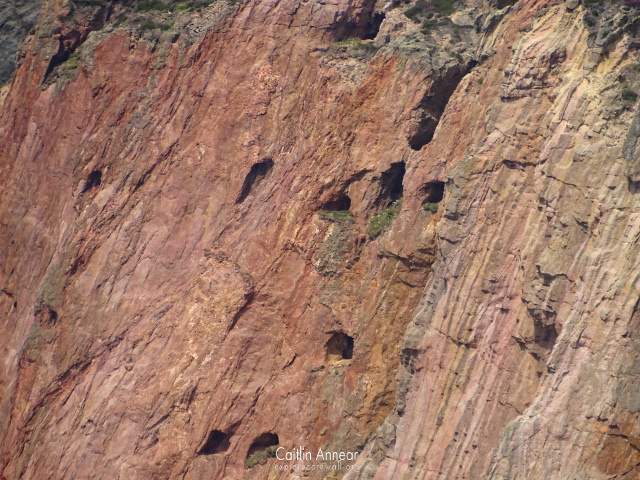
In terms of mining, work began under the Cligga Wolfram and Tin Mines Ltd in 1938 and then the Rhodesian Mine Trust Ltd in 1939. The site became of interest during WWII, with the rich wolfram veins ideal for the production of tungsten, a useful product in making armour plating and bullets. However, but 1945 the mine had closed as the American’s were able to provide more regular shipments to satisfy the wartime needs. The mill was also shut as it proved too costly to run.
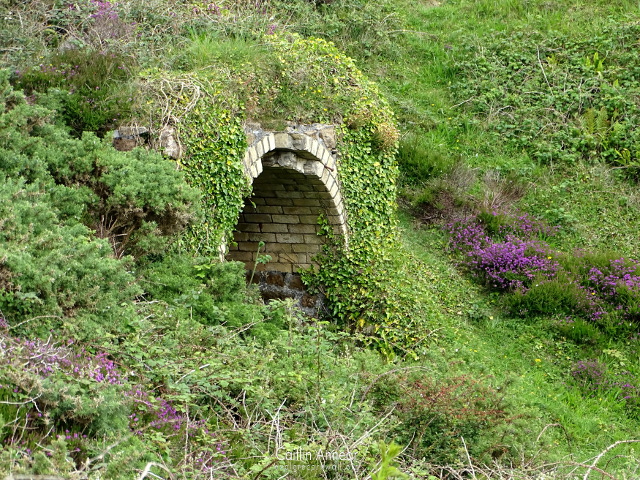
Little occurred after this time. Geevor took a look at the site during the 1960’s, deepened Contact shaft and commenced some underground work. This was short lived and in 1964 Geevor turned its attentions back to the far south-west and Levant mine. Between 1984-85 Wheal Concord evaluated the area for potential work, but a drop in tin prices made this impossible and the site was left alone again.
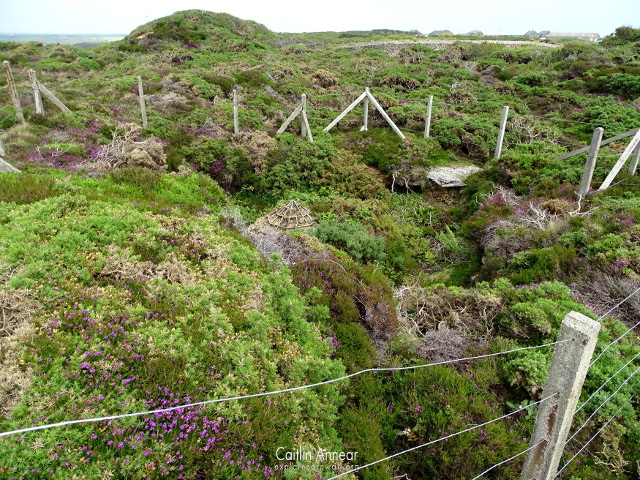
While there are a great number of shafts dotted around the Cligga site, only one is named: Contact.
There were two main adits: Beach and Cliff. These were named creatively after their location on the cliff face and lead into the many levels and passages of the old mens workings.
Between 1940-44 300 tons (272,155 kg) of wolframite and 200 tons (181,437 kg) of black tin were mined.
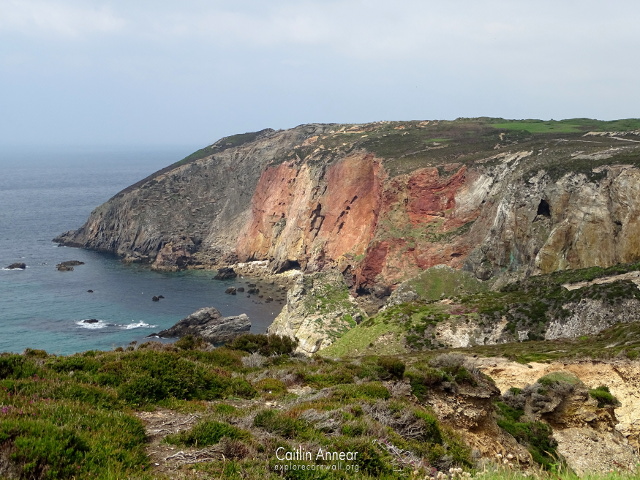
Access is available via the south-west coastpath from St Agnes, Perranporth or through the small industrial estate. Facilities are available in either village, with toilets and cafes. The coastpath is poorly suited for those with mobility issues.
While the site is fairly safe, its wise to stay away from the cliff edge as they are constantly receding and breaking away.
Acton, B. (2005) Around Perranporth, St Agnes and Portreath. Truro: Landfall Publications.
Dines, H. G. (1956) The metalliferous mining regions of south-west England. British Geological Survey.
Jones, S. (2020) Cligga Head Mine, Cornish Mine Images. Available at: http://www.cornishmineimages.co.uk/cligga-head-mine/ (Accessed: 27 February 2020).
